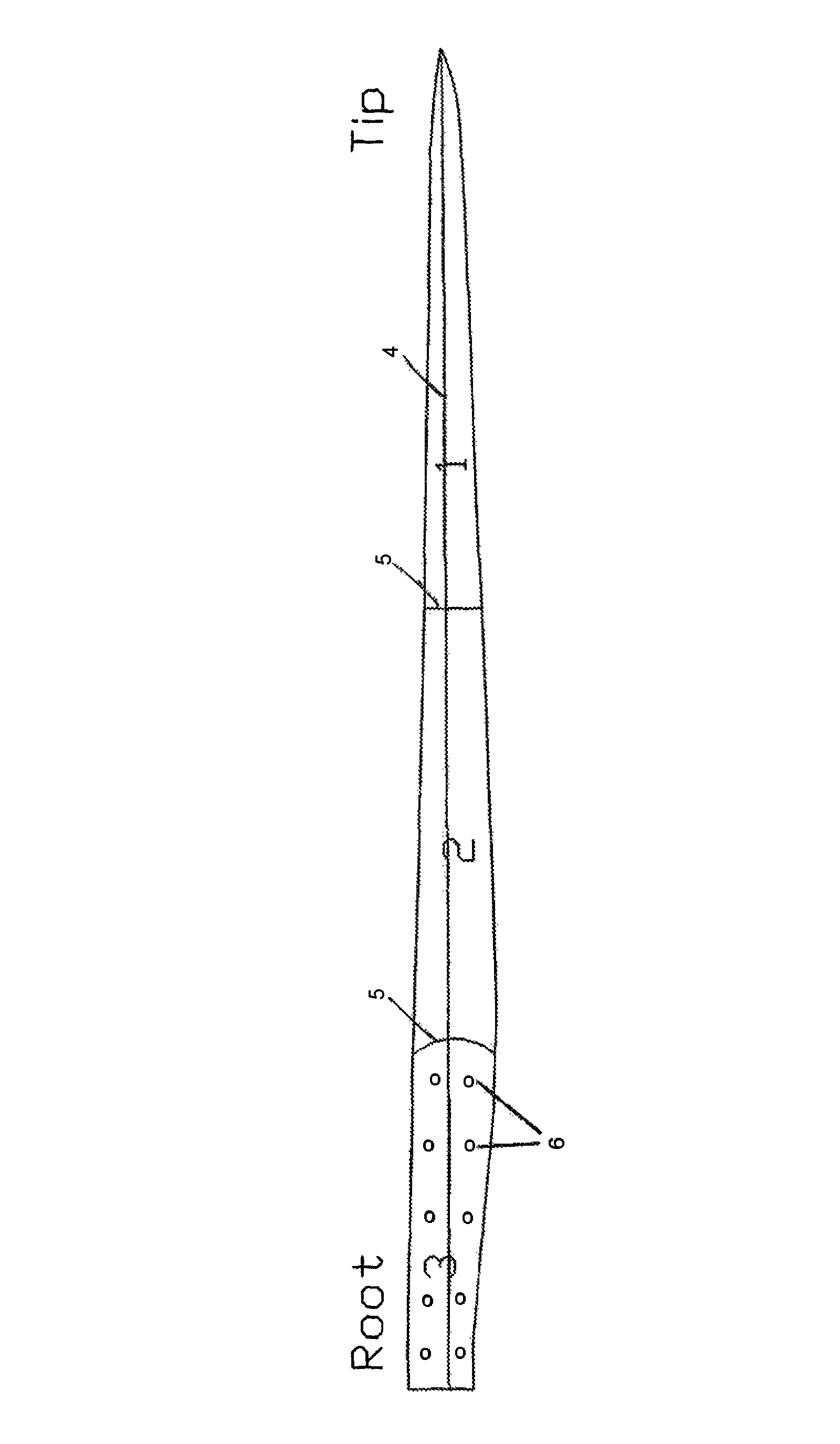Blade for a turbine operating in water
a turbine and blade technology, applied in the direction of sea energy generation, non-positive displacement fluid engine components, liquid fuel engine components, etc., can solve the problems of blade to significant variations, potential severe cyclical stress problems, and depth changes, and achieve excellent resistance for long-term immersion in water. , good affinity for epoxy
- Summary
- Abstract
- Description
- Claims
- Application Information
AI Technical Summary
Benefits of technology
Problems solved by technology
Method used
Image
Examples
Embodiment Construction
[0028]The preferred resin mix is a low viscosity, reactive diluent modified, epoxy resin, cured with a low exotherm ambient curing aromatic amine curing agent. This would have an amount of glass microspheres added to give a mix density of 700 kg / m3.
[0029]The glass microspheres which can be used for the filled resin are normally 15-20 microns in diameter with a density of 0.125 to 0.6 g / cc. These are normally used at a loading of 0-60% depending on the density required from the final cured resin mix.
[0030]Typically, such a glass microsphere filled epoxy resin has a shear strength of 2 MPa-60 MPa depending on filler type and loading, but a typical glass microsphere loaded filled resin with a density of 600 kg / m3 would have a shear strength of 3-8 MPa.
[0031]The compressive properties of such a glass microsphere filled epoxy resin are 12 MPa-120 MPa depending on filler type and loading, but a typical glass microsphere loaded filled resin with a density of 600 kg / m3 would have a compress...
PUM
| Property | Measurement | Unit |
|---|---|---|
| density | aaaaa | aaaaa |
| density | aaaaa | aaaaa |
| density | aaaaa | aaaaa |
Abstract
Description
Claims
Application Information
 Login to View More
Login to View More - R&D
- Intellectual Property
- Life Sciences
- Materials
- Tech Scout
- Unparalleled Data Quality
- Higher Quality Content
- 60% Fewer Hallucinations
Browse by: Latest US Patents, China's latest patents, Technical Efficacy Thesaurus, Application Domain, Technology Topic, Popular Technical Reports.
© 2025 PatSnap. All rights reserved.Legal|Privacy policy|Modern Slavery Act Transparency Statement|Sitemap|About US| Contact US: help@patsnap.com


